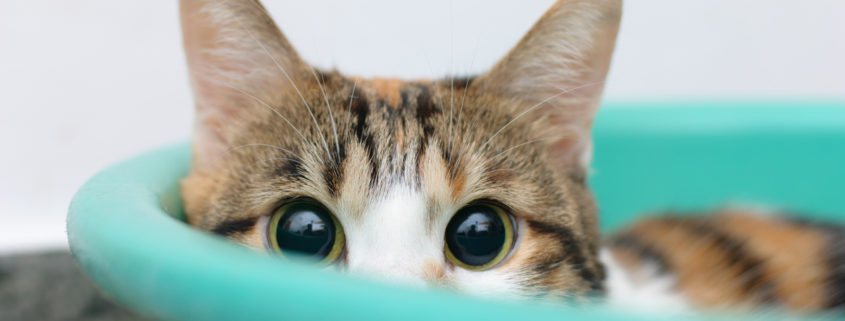From Kibble to Raw: A Feline Food Journey
This month we are featuring Meghan B, who successfully and happily transitioned her feline household onto a species-appropriate raw food diet. As Meghan says, the outcome is a “Cat Mom Win!” Read her challenges, tips, and ultimate success story.
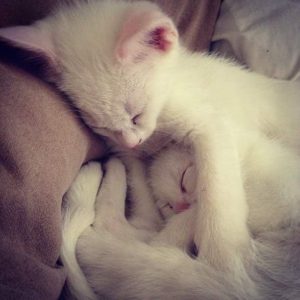
Mya and Diego are my four-year-old purr-babies who came from the same litter. Despite their single origin, each is a unique individual with a differing personality and, as it turns out, gastrointestinal fortitude!
Both fur balls are 100% indoor cats and had been on a kibble (dry food), free-fed diet their entire lives. Previously, I’ve experimented with different proteins and limited-ingredient diet foods because Mya seemed to be particularly sensitive to chicken and salmon. Another concern of mine was the lack of water both cats would drink from their bowl. Instead, they prefer to meow (loudly!) in the sink until I turn on the faucet. Throughout my four years of being the proud cat mom I am, I had never heard of a raw food diet… until recently on a visit to The Happy Beast!
Why raw food you ask? For one, kibble is full of carbohydrates that can often lead to obesity. It lacks a sufficient amount of species-appropriate nutrients and has little to no water content. While I know that kibble may be cheaper and free-feeding my cats is convenient, I’d rather go a little out of my way for the overall health of my babies!
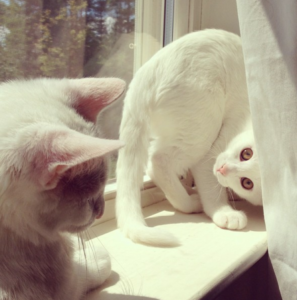 Our cats’ relatives are hunters and live off their prey, so why shouldn’t our pet cats also eat raw?! Raw food is all protein. It’s minimally-processed, contains plenty of moisture, and is amazing for your cats’ digestive health.
Our cats’ relatives are hunters and live off their prey, so why shouldn’t our pet cats also eat raw?! Raw food is all protein. It’s minimally-processed, contains plenty of moisture, and is amazing for your cats’ digestive health.
Mya has not thrown up once since switching to raw, which for me, is a huge Cat Mom win. Both of their coats are already softer and their stool is smaller/less frequent because their bodies are using all the essential nutrients from their food.
The process of switching my kibble-loving cats to raw-food felines was not the easiest, but I urge all of you that are trying to not give up! They were both set in their kibble-eating ways, although, Diego was much easier to transition than Mya. I started by shredding dehydrated food and mixing it in with some of their old kibble. Mind you, I had to try several types of dehydrated foods because Mya wouldn’t touch some or, alternatively, she would get sick. Next, I gave them only dry, dehydrated food for a few days before adding water to rehydrate the food. This was Mya’s first time eating “wet” food, because, unlike her brother, she would not touch canned food. After sticking to the rehydrated food for a couple of weeks, I then started to slowly introduce raw food. I began with duck raw food because they had been eating duck in both the kibble and dehydrated form. But Diego threw up and Mya wouldn’t touch it. I had stayed away from chicken for years because Mya would get sick every time she had anything chicken based, but I decided to try it in a raw form. 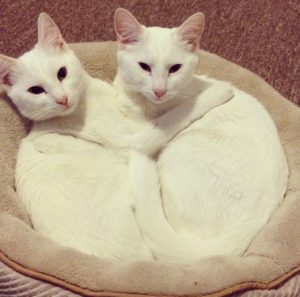 I put a spoonful of raw food under some of their dehydrated food. Diego loved it! Mya still wasn’t convinced. She would eat around the raw food. I kept trying this with Mya for a few days and started to mix the dehydrated food into the raw so that she had to try it. I would also add a tablespoon of water to it. It took a bit of time and persistence, but she finally started eating the whole bowl of food. Within a few days from that point, Mya was completely on a raw food diet! Victory!!! The overall transition took Mya about 1 1/2 months and Diego about 3 weeks.
I put a spoonful of raw food under some of their dehydrated food. Diego loved it! Mya still wasn’t convinced. She would eat around the raw food. I kept trying this with Mya for a few days and started to mix the dehydrated food into the raw so that she had to try it. I would also add a tablespoon of water to it. It took a bit of time and persistence, but she finally started eating the whole bowl of food. Within a few days from that point, Mya was completely on a raw food diet! Victory!!! The overall transition took Mya about 1 1/2 months and Diego about 3 weeks.
Overall, I truly couldn’t be happier that my fur babies are now on a raw food diet. Despite the trials and tribulations to reach the outcome, it was all worth the effort. I’m looking forward to seeing continued health benefits for my kitties over the months and years to come!
If you’re working on transitioning your own kitties to a raw food diet, I highly recommend a few other blog posts from The Happy Beast:

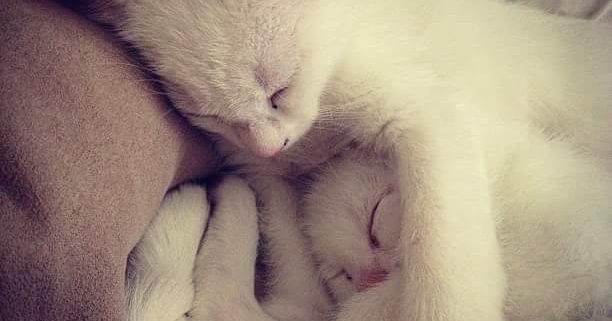
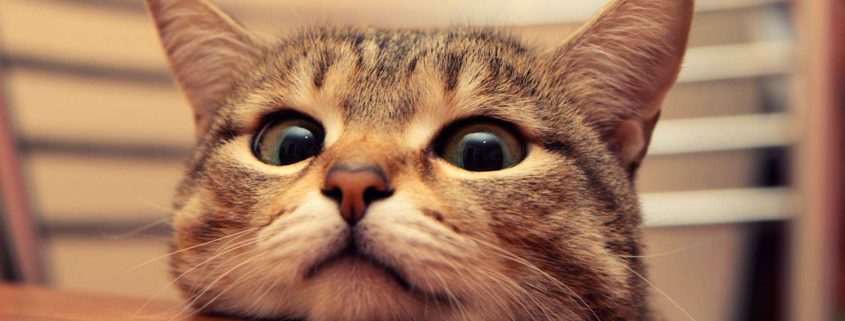
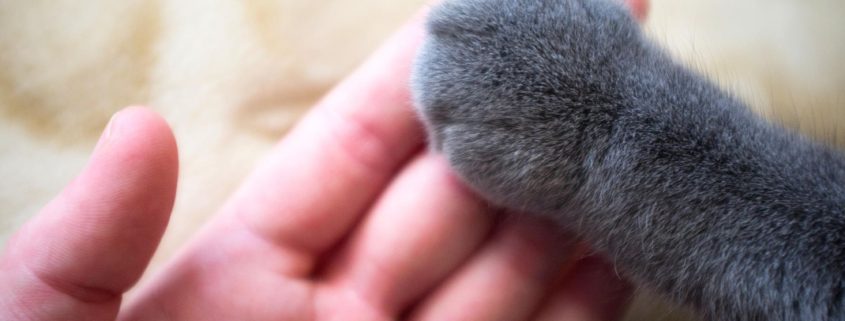
 As veterinarians continue to advocate for their patients by better understanding and researching different means to combat chronic and acute pain in their patients, bodywork such as massage therapy and acupuncture are becoming much more commonplace in veterinary medicine. Consistent use of these modalities continues to positively enhance the lives of pets living with different levels of physical and emotional pain. While some may gawk at the idea of massage therapy for cats, the results at Peak Animal Wellness and Massage steadily speak for themselves!
As veterinarians continue to advocate for their patients by better understanding and researching different means to combat chronic and acute pain in their patients, bodywork such as massage therapy and acupuncture are becoming much more commonplace in veterinary medicine. Consistent use of these modalities continues to positively enhance the lives of pets living with different levels of physical and emotional pain. While some may gawk at the idea of massage therapy for cats, the results at Peak Animal Wellness and Massage steadily speak for themselves! Benefits of massage therapy include (but are not limited to!) increasing circulation, preventing muscle atrophy (wasting), pain relief, increasing flexibility, prevention of injuries, speeds healing processes, and emotional support.
Benefits of massage therapy include (but are not limited to!) increasing circulation, preventing muscle atrophy (wasting), pain relief, increasing flexibility, prevention of injuries, speeds healing processes, and emotional support. According to the ASPCA, the average lifespan of an indoor domesticated cat is somewhere between 13-17 years old, however it’s really not uncommon to see cats who are 20 years and older (I have a 20 year old cat myself!). Because they live such long lives, we know that their bodies (even without significant medical conditions or physical traumas) experience age related changes, such as arthritis. It’s important to remember that a cat’s pain tolerance is absolutely through the roof, and often times guardians will have no idea that their cat is experiencing any discomfort at all!
According to the ASPCA, the average lifespan of an indoor domesticated cat is somewhere between 13-17 years old, however it’s really not uncommon to see cats who are 20 years and older (I have a 20 year old cat myself!). Because they live such long lives, we know that their bodies (even without significant medical conditions or physical traumas) experience age related changes, such as arthritis. It’s important to remember that a cat’s pain tolerance is absolutely through the roof, and often times guardians will have no idea that their cat is experiencing any discomfort at all!
 Chester is an 8 year old domestic shorthaired cat who has experienced chronic lower back pain for years. He receives regular acupuncture, and is on an excellent diet. While he usually does well with his regular bodywork regime, his condition recently regressed, and so his guardian decided to try regular massage therapy sessions with Peak Animal Wellness and Massage. After only a few weekly sessions, Chester’s guardian noticed a substantial shift in his personality. He was happier, more playful, and overall less distant. His veterinarian also noticed a decrease in pain while assessing his condition, and he became more receptive to his acupuncture treatments. Yay, Chester!
Chester is an 8 year old domestic shorthaired cat who has experienced chronic lower back pain for years. He receives regular acupuncture, and is on an excellent diet. While he usually does well with his regular bodywork regime, his condition recently regressed, and so his guardian decided to try regular massage therapy sessions with Peak Animal Wellness and Massage. After only a few weekly sessions, Chester’s guardian noticed a substantial shift in his personality. He was happier, more playful, and overall less distant. His veterinarian also noticed a decrease in pain while assessing his condition, and he became more receptive to his acupuncture treatments. Yay, Chester! Our cats are family. As guardians and professionals, our understanding of them — both medically and behaviorally — continues to grow each day. As Peak Animal Wellness and Massage continues to flourish, we will further advocate for your cat’s wellbeing, and also for their place within this complimentary modality.
Our cats are family. As guardians and professionals, our understanding of them — both medically and behaviorally — continues to grow each day. As Peak Animal Wellness and Massage continues to flourish, we will further advocate for your cat’s wellbeing, and also for their place within this complimentary modality.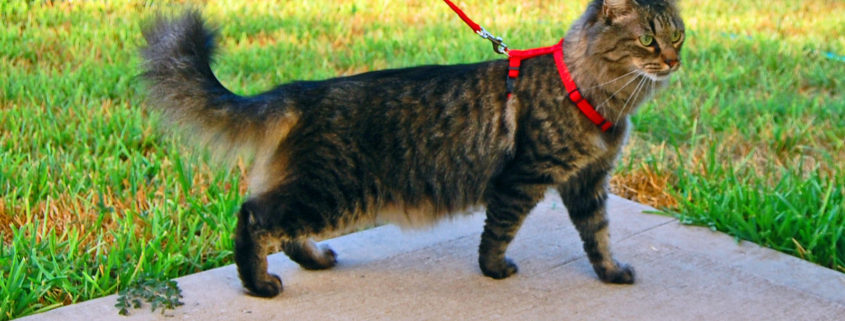
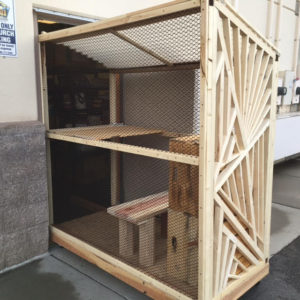 *Remember that while some cats absolutely love getting out and about, for other cats, especially those that are skittish, it might not be the best expression of their energy. For these kitties, a cat enclosure may be the safest way for them to interact with their natural environment.
*Remember that while some cats absolutely love getting out and about, for other cats, especially those that are skittish, it might not be the best expression of their energy. For these kitties, a cat enclosure may be the safest way for them to interact with their natural environment.